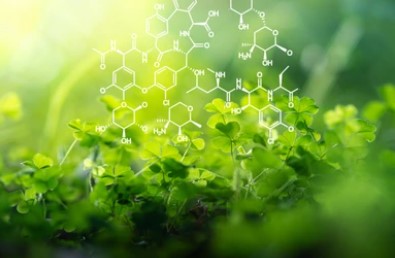
Geranylgeranyl pyrophosphate synthase (GGPPS) is a member of the terpene synthase family, whose primary function is to catalyze the synthesis of geranylgeranyl pyrophosphate (GGPP) from three molecules of IPP and one molecule of DMAPP. GGPP is an essential precursor of compounds essential for plant growth and development and is capable of synthesizing a variety of structurally diverse metabolites in plants, including gibberellins, carotenoids, and chlorophylls. Bioinformatics analysis of GGPPS help to study the biological functions of GGPPS proteins in medicinal plants.
Lifeasible's experienced analysis team can provide bioinformatics analysis services for GGPPS proteins of medicinal plants based on protein amino acid sequences, including functional, structural domain analysis and protein multi-level structure analysis, to help achieve genetic improvement of medicinal plant species and improve the yield of medicinal herbs.
Due to the spatial specificity of the biosynthesis of plant terpene components, subcellular localization of GGPPS proteins can help to understand their function speculatively. We typically use ProtParam and Psort to predict the physicochemical properties and subcellular localization of plant GGPPS amino acid sequences.
We use ProtScale to predict and analyze the hydrophobicity of the amino acid sequence of GGPPS in medicinal plants.
We use ProtScale to predict and analyze the transmembrane structural domains of the GGPPS proteins of medicinal plants.
We have used ProtScale to predict and analyze the functional, and structural domains of the GGPPS proteins of medicinal plants and to speculate on the sites of compound binding catalysis.
Signal peptides of GGPPS proteins from medicinal plants were predicted and analyzed by Signal P, SOPMA, and WebLogo to identify and analyze whether they are secreted proteins.
The secondary structure analysis of GGPPS protein using the SOPMA method can obtain the proportion of α-helix (H), β--fold (E), and irregular coiled (C) in the secondary structure. Using SWISS-MODEL to predict the three-dimensional structure of GGPPS in medicinal plants.
Prediction and analysis of the conservation of GGPPS proteins in medicinal plants using WebLogo.
The amino acid sequences of GGPPS are compared with Blast P to select sequences with high homology. The software MEGA 11.0 is used to compare these GGPPS amino acid sequences in multiple sequences and construct an NJ evolutionary tree based on the complete amino acid sequences to indicate kinship and genetic distance effectively.
| Scientific Name | Login Number |
|---|---|
| Catharanthus roseus | CAA63486.1 |
| Gentiana rigescens | AHK06853.1 |
| Chrysanthemum indicum L var. boreale | AGU91431.1 |
| Conyza blinii Levl. | BAB82463.1 |
| Gentiana lutea | BAB82463.1 |
| Sinapis alba | CAA67330.1 |
| Rehmannia glutinosa | AMK51092.1 |
| Croton sublyratus | BAA86284.1 |
| Scoparia dulcis | BAA86285.1 |
| Arabidopsis thaliana | AAA32797.1 |
| Panax notoginseng | AIK21792.1 |
| Tripterygium wilfordii | AKU77012.1 |
| Salvia miltiorrhiza | AFY26193.1 |
| Salvia miltiorrhiza | ACR19637.1 |
| Ginkgo biloba | AAQ72786.1 |

Lifeasible has been dedicated to providing customizable bioinformatics analysis of GGPPS in medicinal plants for many years. Please feel free to contact us with your questions, needs, or collaborations.
Lifeasible has established a one-stop service platform for plants. In addition to obtaining customized solutions for plant genetic engineering, customers can also conduct follow-up analysis and research on plants through our analysis platform. The analytical services we provide include but are not limited to the following:
Get Latest Lifeasible News and Updates Directly to Your Inbox
Adaptive Evolutionary Mechanism of Plants
February 28, 2025
Unraveling Cotton Development: Insights from Multi-Omics Studies
February 27, 2025